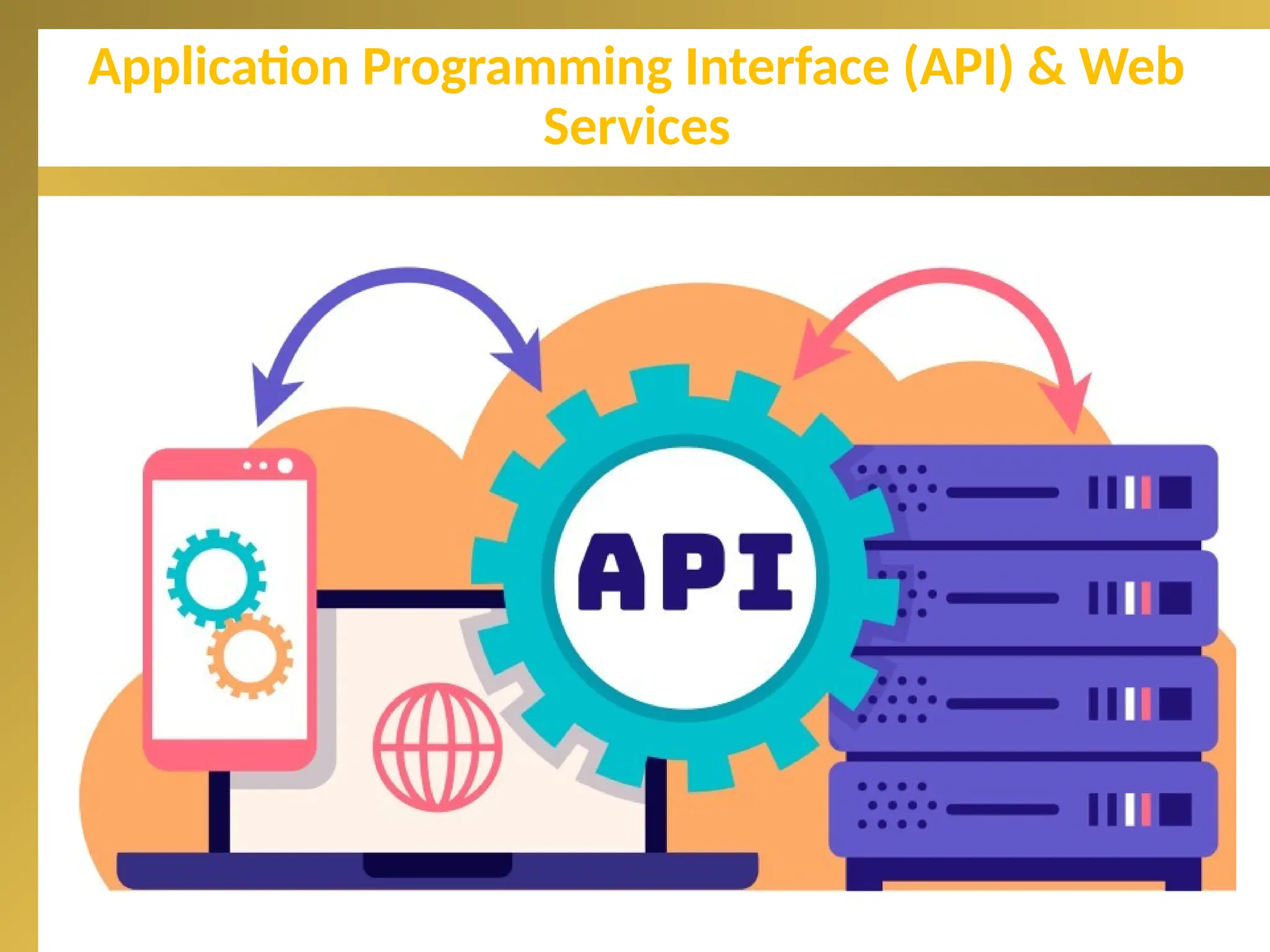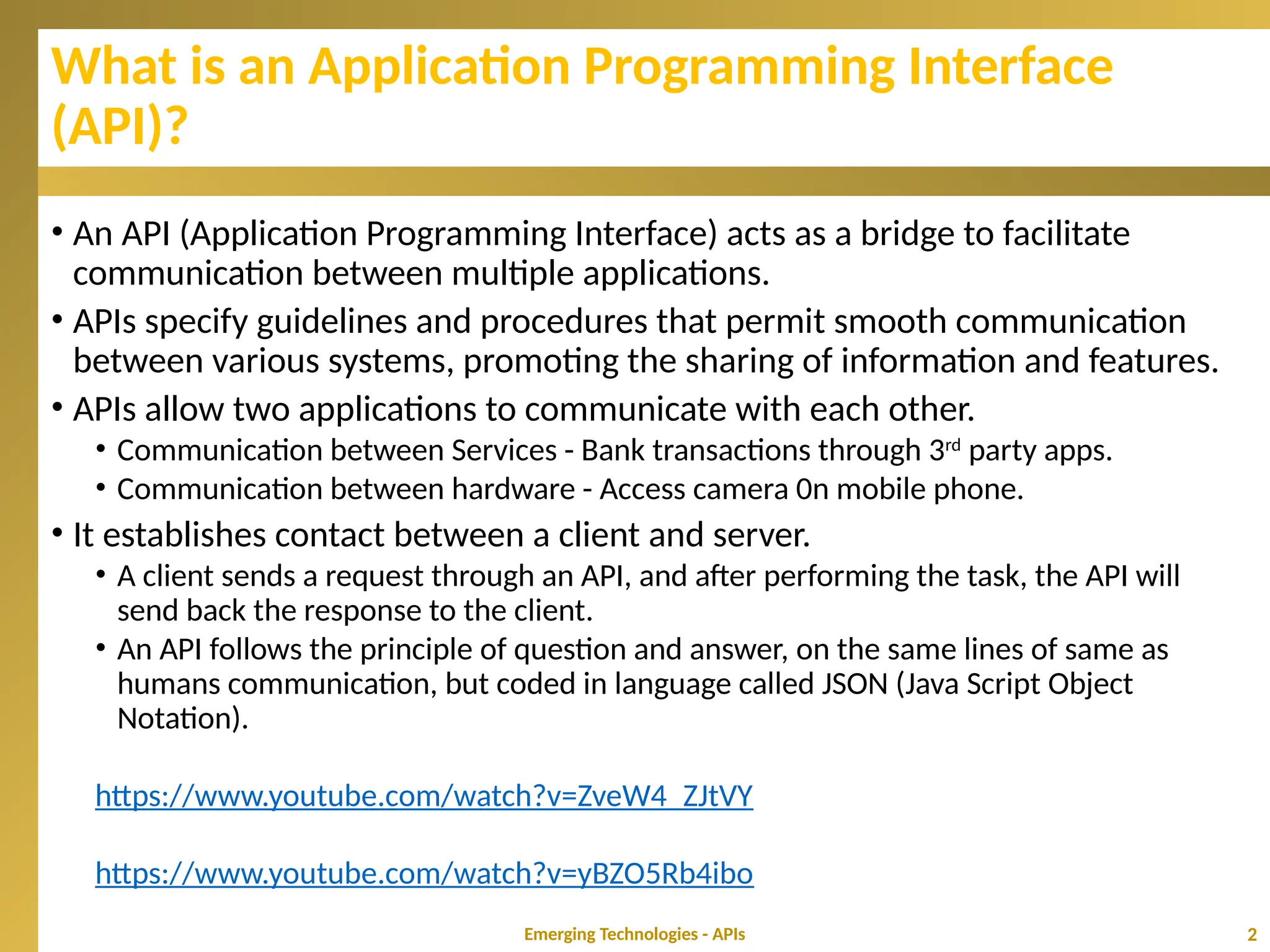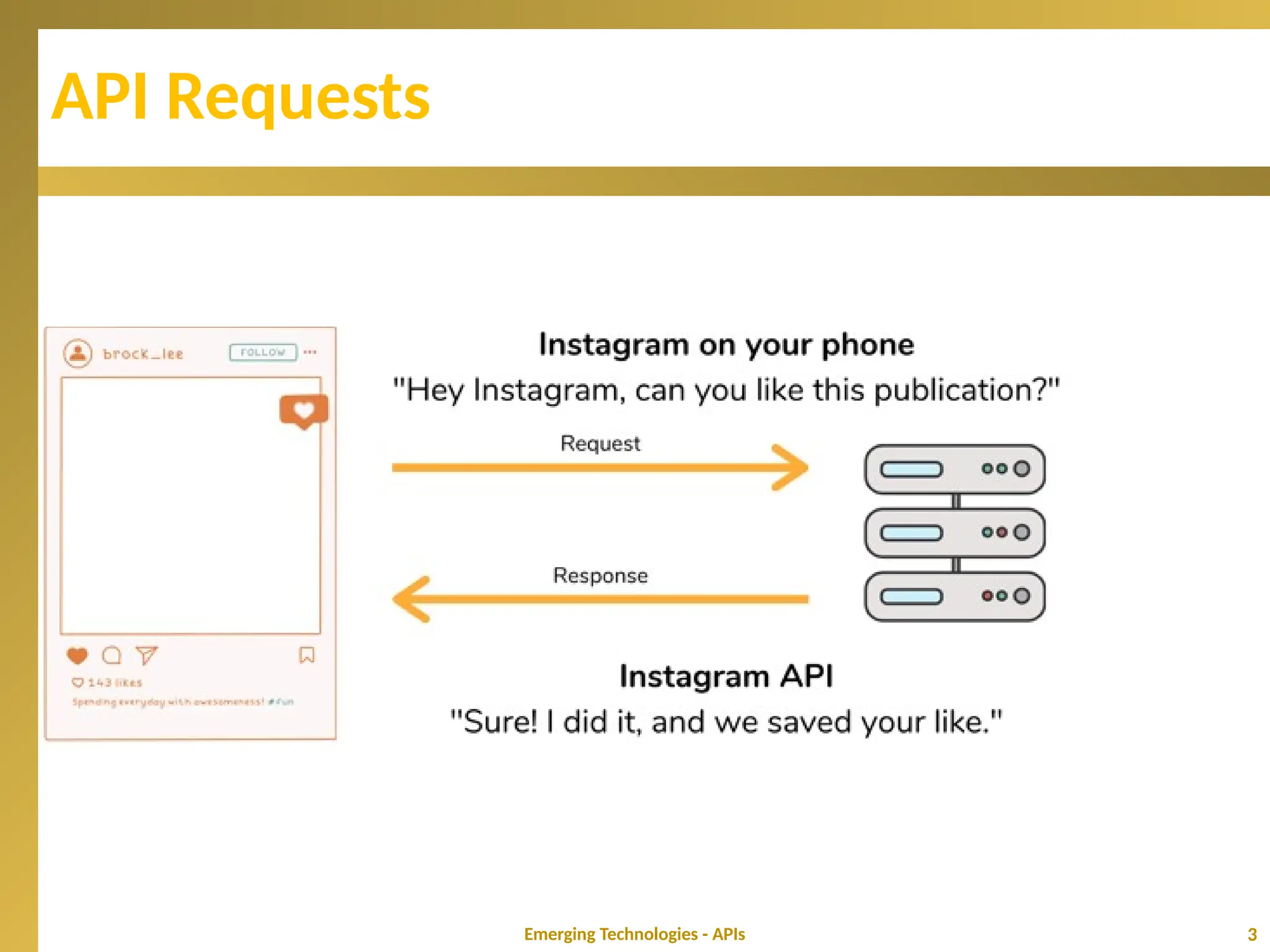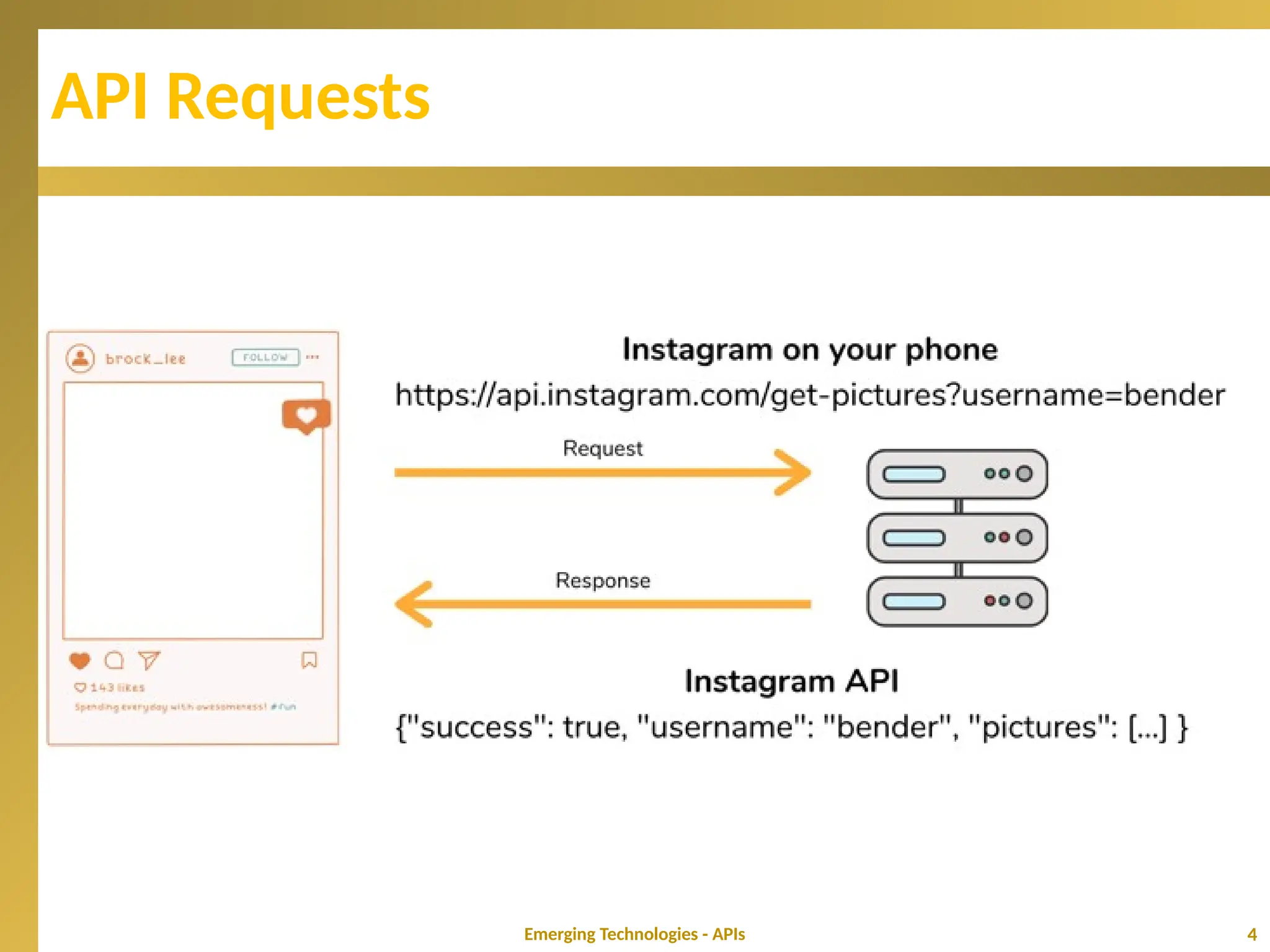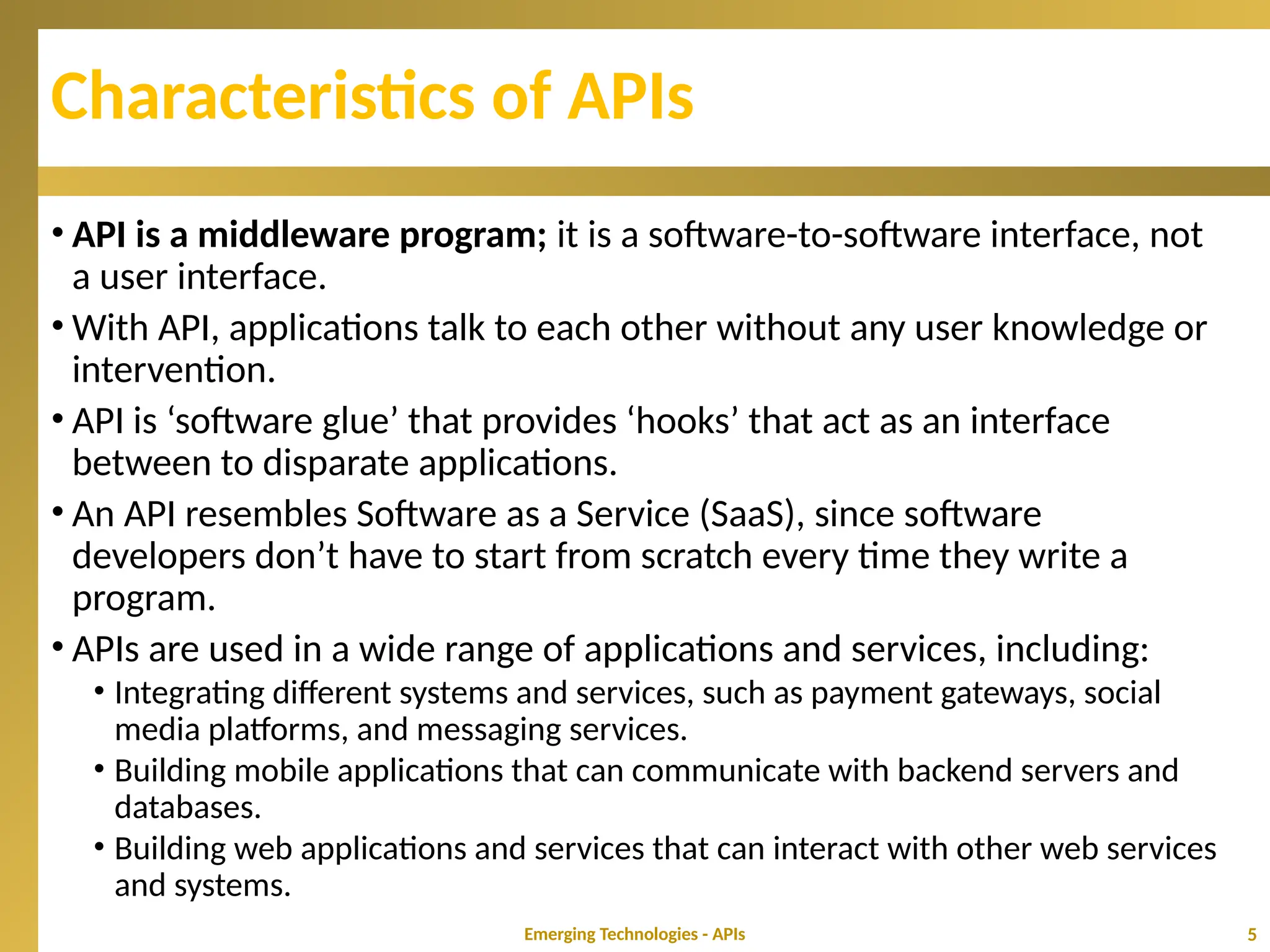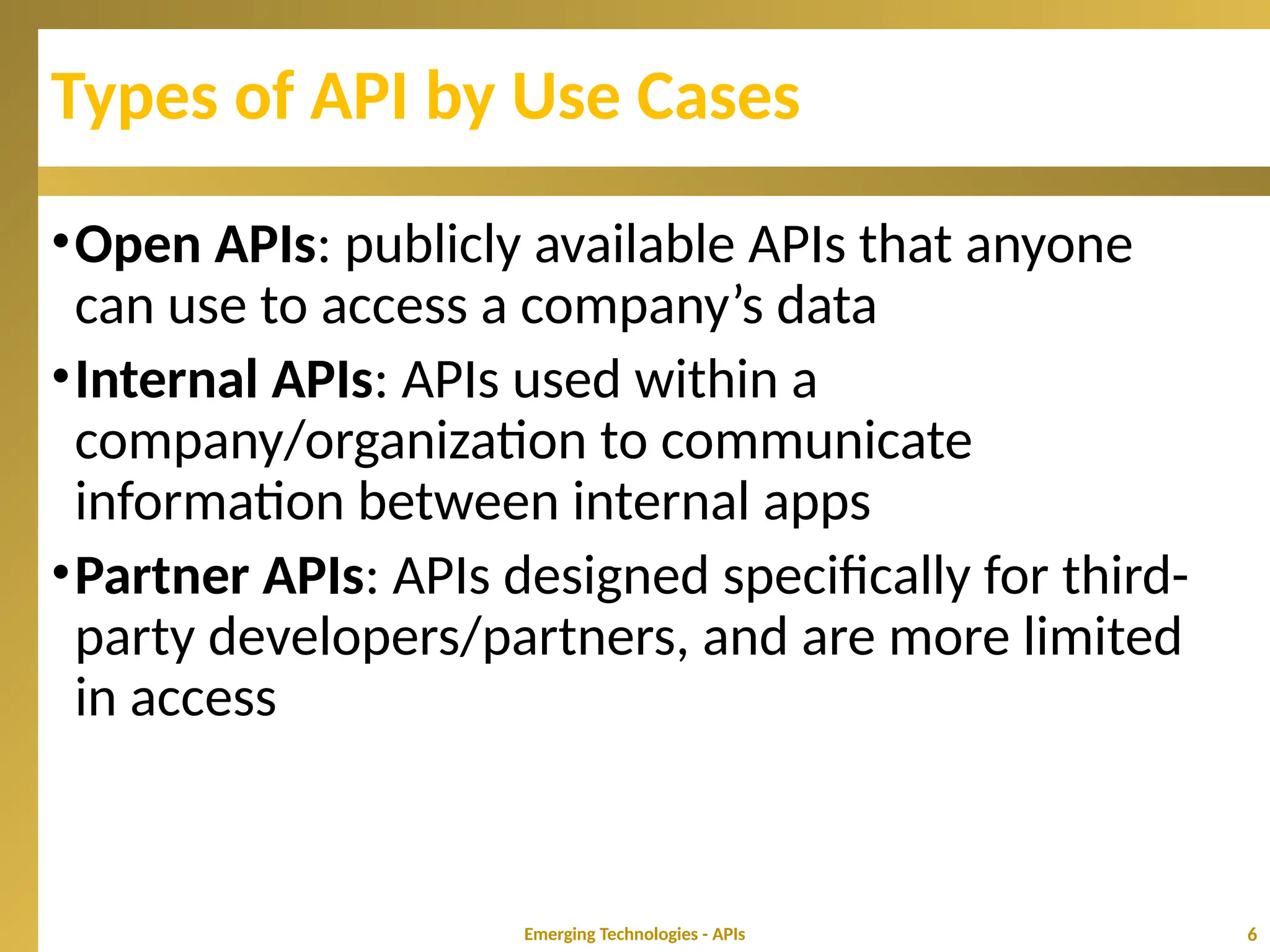An Application Programming Interface (API) is a bridge that enables communication between multiple applications by specifying guidelines and procedures for data exchange. APIs allow applications to communicate without user intervention and are crucial for integrating systems, such as payment gateways and mobile apps. They come in different types, including open APIs for public use, internal APIs for organization use, and partner APIs for limited third-party access.
